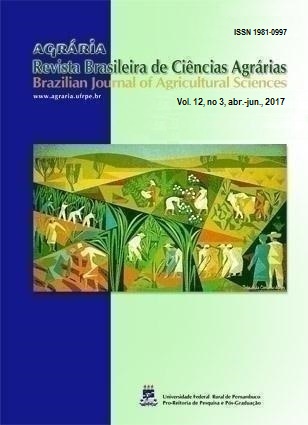Agricultural economic viability of taro intercropped with broccoli, chinese cabbage, eggplant, jilo, peppers and gherkin
DOI:
https://doi.org/10.5039/agraria.v12i3a5452Keywords:
intercropping, Colocasia esculenta, economic indicators, yieldAbstract
The vegetable production is an intensive activity in terms of the use of available resources, such a soil, water, and nutrients, requiring a high investment per unit of area. In the case of small farms, usually characterized by family exploration, the restriction of the physical area for crops is associated with them, where for situations of this nature, intercropping becomes an interesting option. On this, the objective of this work was to verify the viability of the agricultural economic taro consortium with broccoli, Chinese cabbage, eggplant, jilo, peppers, and gherkins. The experiment was conducted at Department of Plant Science Garden of the Federal University of Viçosa. It consisted of 13 treatments resulting from intercropping by taro with broccoli, Chinese cabbage, eggplant, jilo, pepper and gherkin as well as their respective monocultures. The experimental design was a randomized complete block design with four replications. The crops of vegetables were weekly, beginning about 60 days after transplantation and performed for approximately 120 days, with the exception of Chinese cabbage whose harvest was performed at a single time. Evaluated the productive characteristics of cultures and agroeconomic indicators to measure the efficiency of intercropping systems. Data were to the analysis of variance and means were compared by a Tukey and Dunnet tests for the data of taro productivity, F test for the contrast performed in the intercropped cultures and the Scott Knott averages grouping for the economic data. All intercropping were efficient, as presented UET above unity and high net income and monetary advantage. The taro - jilo intercropping was the least economically advantageous when compared to the others.
Downloads
Downloads
Published
How to Cite
Issue
Section
License

This work is licensed under a Creative Commons Attribution-NonCommercial 3.0 Unported License.


